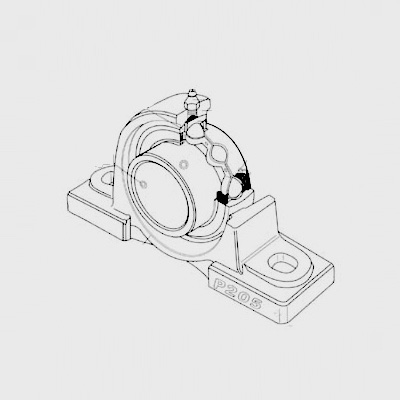
Sep . 07, 2024 08:16 Back to list
Single Direction Thrust Bearing - High Performance & Reliability
Understanding Single Direction Thrust Bearings
Single direction thrust bearings are crucial components in various mechanical systems, particularly those involving rotating machinery. These bearings are designed to support axial loads in one direction, providing stability and reducing friction between moving parts. As engineering demands grow, the importance of understanding thrust bearings becomes paramount.
Thrust bearings differ from other bearing types, such as radial bearings, which support loads perpendicular to the shaft's axis. Single direction thrust bearings are specifically engineered to handle loads that act along the axis of the rotating shaft. This attribute makes them essential in applications where machinery experiences unidirectional forces, such as in turbines, marine propulsion systems, and heavy-duty industrial machinery.
The construction of single direction thrust bearings typically involves a series of washers or discs, often made from materials such as steel, bronze, or composite materials. These components allow for the effective transfer of forces while minimizing wear and tear. The design of thrust bearings can also include features like lubrication grooves or holes, facilitating grease or oil distribution to reduce friction further and extend the bearing's lifespan.
single direction thrust bearing

One of the significant advantages of single direction thrust bearings is their ability to accommodate high axial loads. This capability is crucial in industries where durability and reliability are paramount. For instance, in a ship's propeller shaft, a single direction thrust bearing can withstand the immense forces generated by the propeller's rotation, ensuring smooth operation and longevity of the vessel's mechanical systems.
However, it is essential to recognize the limitations of single direction thrust bearings. They can only handle loads in one direction, necessitating the use of additional bearings or support structures to manage opposing forces. When designing systems that incorporate these bearings, engineers must consider the total load conditions and ensure that the bearing selection aligns with the application's requirements.
Maintenance is another critical aspect of managing single direction thrust bearings. Regular inspections, lubrication, and monitoring for wear can help identify issues before they lead to catastrophic failures. Operators should maintain proper alignment and ensure that the bearings are not exposed to excessive environmental conditions that could accelerate degradation.
In conclusion, single direction thrust bearings play a vital role in various mechanical systems, offering advantages in load capacity and operational efficiency. Their unique design and construction support crucial contemporary engineering applications, making them indispensable in machinery that requires axial load management. Understanding their function, limitations, and maintenance needs is essential for engineers and operators alike to ensure optimal performance and longevity in mechanical systems. Through careful consideration and proper implementation, single direction thrust bearings can significantly contribute to the reliability and efficiency of modern machinery.
Latest news
-
Common Failures in Thrust Ball Bearings and Solutions
NewsAug.22,2025
-
How Tapered Roller Bearings Can Take Shock Loads
NewsAug.22,2025
-
Angular Bearings in High-Precision Spindles
NewsAug.22,2025
-
The Impact of Misalignment on Cylindrical Roller Bearing Performance
NewsAug.22,2025
-
The Role of Cage Design in Deep Groove Ball Bearing Durability
NewsAug.22,2025
-
The Impact of Material Quality on Machinery Bearings’ Lifespan
NewsAug.22,2025
